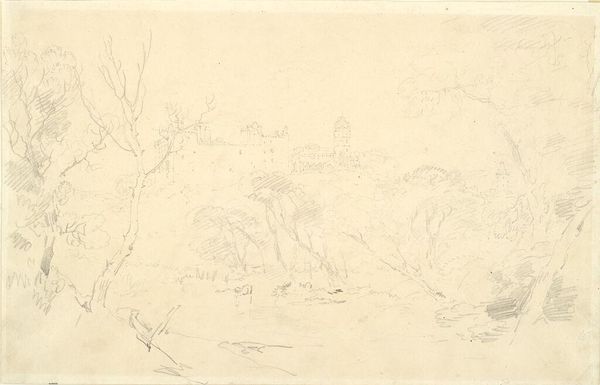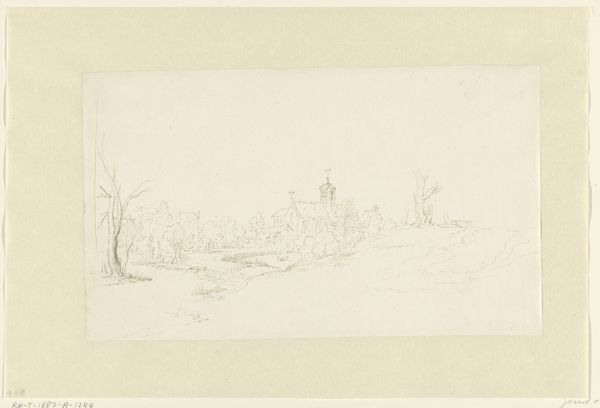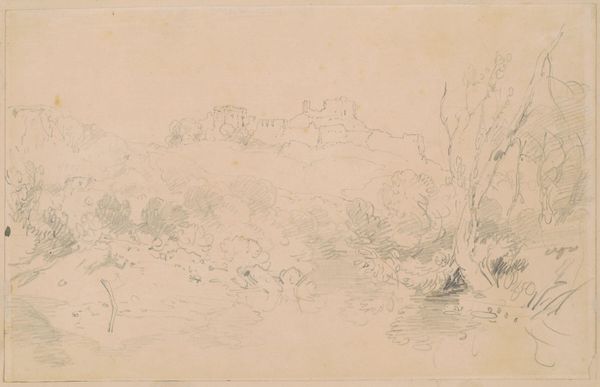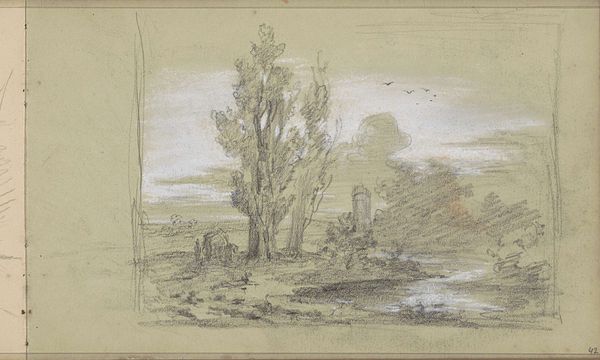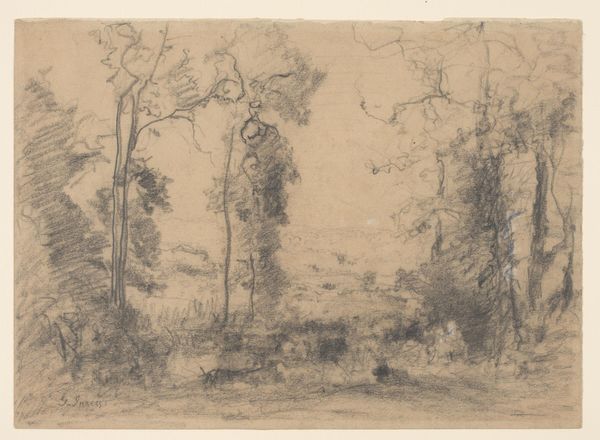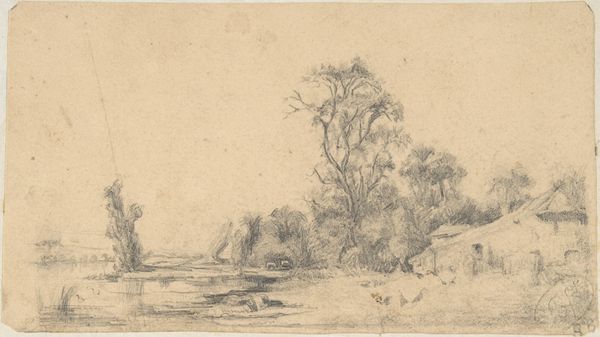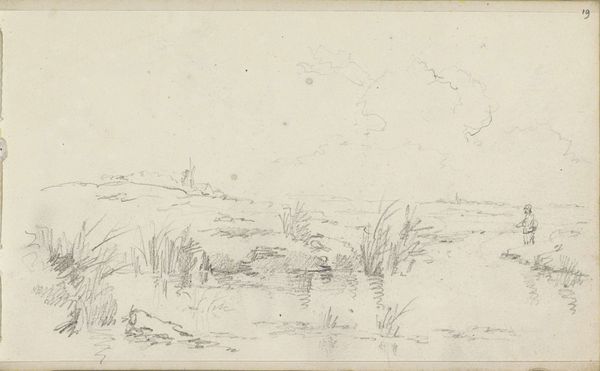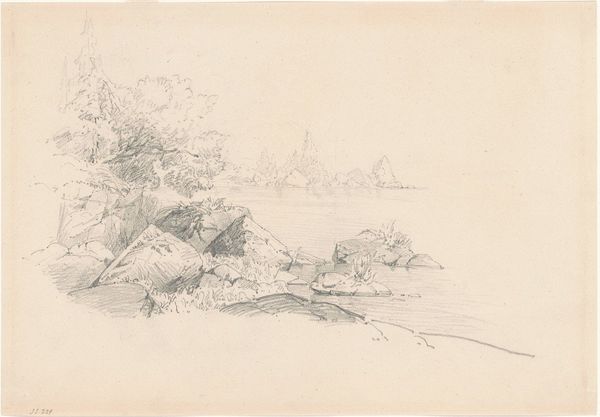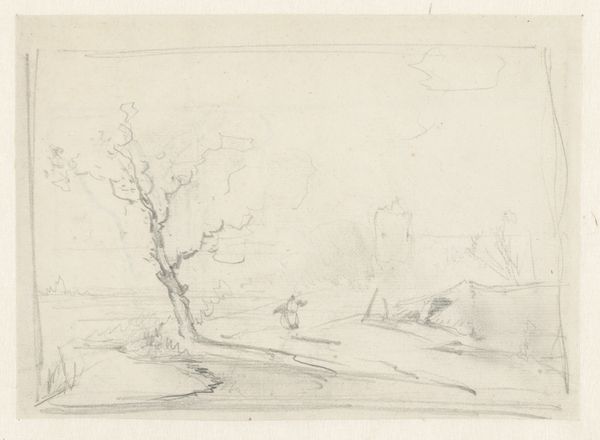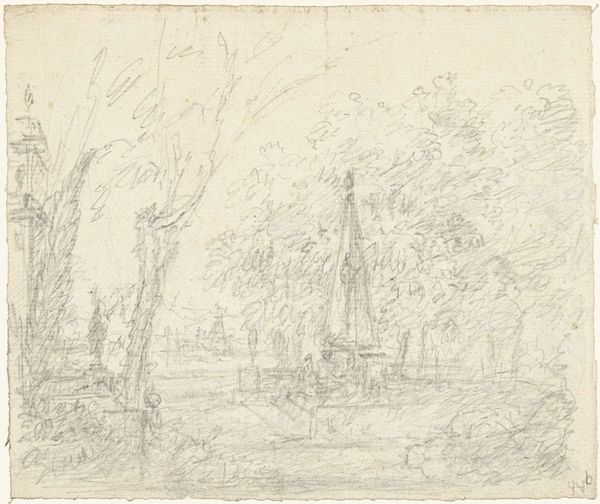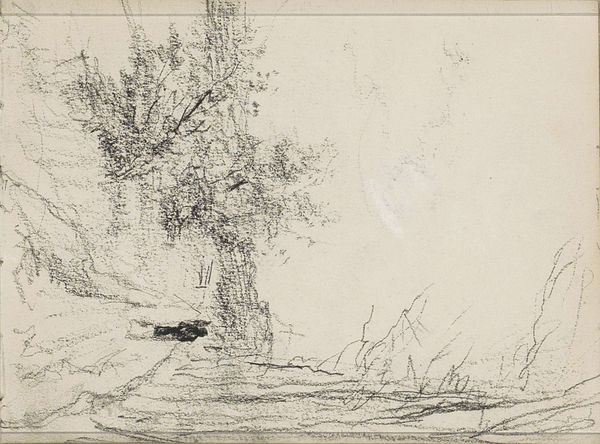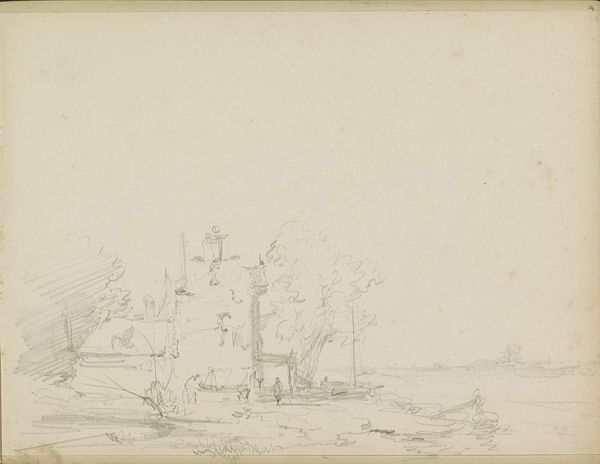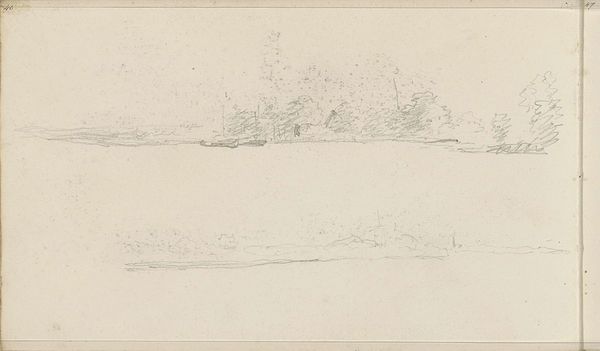
drawing, pencil
#
drawing
#
pencil sketch
#
landscape
#
pencil
#
realism
Dimensions: height 142 mm, width 218 mm
Copyright: Rijks Museum: Open Domain
Curator: Well, the first thing that strikes me is the sense of stillness, almost a hushed reverence. The pencil work is so delicate; it's like a captured breath on paper. Editor: It's interesting you say that, because when I look at Willem Cornelis Rip's "Landschap en zeegezichten," created around 1874-1875, I think about the rise of plein air painting. Artists leaving studios to encounter landscape directly as an expression of burgeoning nationalist movements and landscape appreciation in the Netherlands. What do you think about that interpretation? Curator: I can certainly appreciate the historical framing. Looking at it with those notions in mind, I feel a connection between Rip and the Romantic movement. There is something timeless in rendering this raw sketch into art. Editor: It's fascinating to consider realism meeting symbolism here, the tree branches are so explicitly and skillfully portrayed, as are the subtle waves in the foreground of the sketch. These detailed gestures contrast with the misty forms in the background that render this image as dreamlike. There is that dialogue with societal conventions happening within the artwork. Curator: Absolutely. The soft gray tones feel meditative and speak to art historical conventions surrounding the natural versus the unnatural, with one challenging the other through the artist's perspective. One might interpret this piece, or indeed similar sketches, as deeply cathartic. Editor: Rip worked in a period of substantial cultural change, the shifting artistic trends also represent something bigger, namely that of nationhood in Europe. Think about the way academic training influenced art versus a move toward private or landscape expressionism; that also had political ramifications. Curator: So, the act of drawing itself became a subtle statement? A push toward representing more ordinary images, reflecting personal encounters and experiences and perhaps moving away from glorifying grand themes rooted in nation-building exercises and wars. Editor: Precisely. An expression of lived experience within the politics of that specific era. Curator: Thank you, I now see this landscape in an even more poignant context. I love how our conversation revealed a world of social meaning and cultural purpose contained within this simple sketch.
Comments
No comments
Be the first to comment and join the conversation on the ultimate creative platform.
